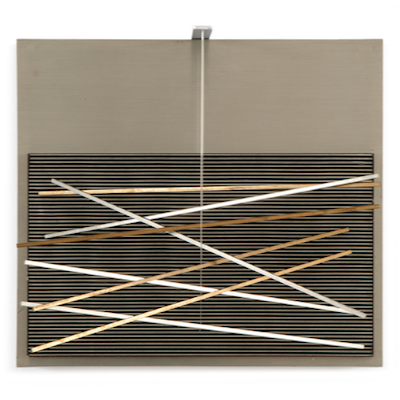
Details
Artist
Styles
// Victor Vasarely's Firka is a limited-edition silkscreen print that exemplifies his mastery of optical art, creating an illusion of depth and movement through geometric abstraction. The composition is structured around a grid of squares and circles, layered in shades of blue, purple, pink, and black. Each quadrant of the artwork seems to bend and warp, drawing the viewer’s eye toward the center and giving the impression of a three-dimensional form on a flat surface. Vasarely’s meticulous use of color and pattern generates a mesmerizing, pulsating effect that shifts as the viewer’s gaze moves across the piece. This work is a prime example of Vasarely's exploration of perception and visual dynamism in the Op Art movement.
Firka
form
Medium
Size
82 x 76 cm
- Inches
- Centimeters
Edition
Price
- USD
- EUR
- GBP
Details
Artist
Styles
// Victor Vasarely's Firka is a limited-edition silkscreen print that exemplifies his mastery of optical art, creating an illusion of depth and movement through geometric abstraction. The composition is structured around a grid of squares and circles, layered in shades of blue, purple, pink, and black. Each quadrant of the artwork seems to bend and warp, drawing the viewer’s eye toward the center and giving the impression of a three-dimensional form on a flat surface. Vasarely’s meticulous use of color and pattern generates a mesmerizing, pulsating effect that shifts as the viewer’s gaze moves across the piece. This work is a prime example of Vasarely's exploration of perception and visual dynamism in the Op Art movement.
- Recently Added
- Price (low-high )
- Price (high-low )
- Year (low-high )
- Year (high-low )
What is kinetic art?
Kinetic art is an international movement that emerged in the 1920s and gained prominence in the 1960s, referring to art that involves both apparent and real motion. It encompasses any medium that includes movement, either relying on actual motion for its effect or being perceived as moving by the viewer. Early examples include canvas paintings designed to create optical illusions of movement. Today, kinetic art often refers to three-dimensional figures and sculptures, such as those operated by machines or those that move naturally. The movement covers a variety of styles and techniques that frequently overlap.






































































